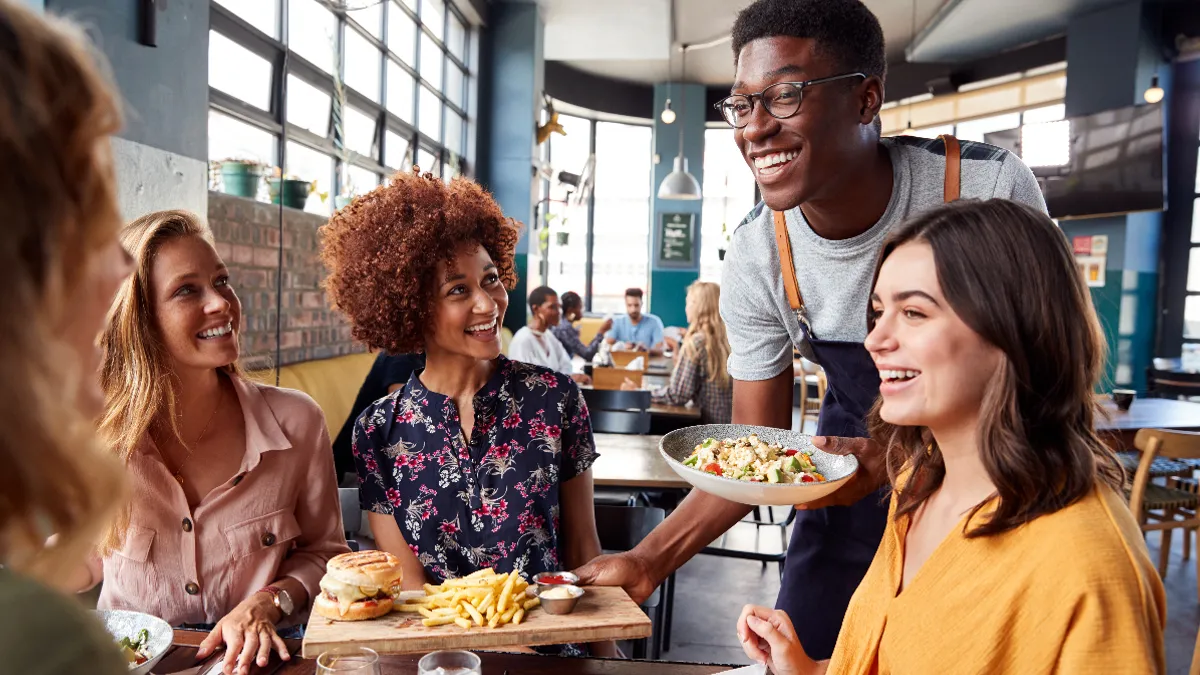Dive Brief:
- Consumers spend about 40% of their food budgets on restaurants, according to a May Popmenu survey of over 1,000 consumers.
- When ordering from restaurants online, 33% of diners spend $50 or more on average, per the survey. Forty-five percent of consumers eat in restaurants at least twice a week.
- As inflation squeezes budgets, consumers report they would be more likely to cut spending on clothes, travel, gym memberships, rideshare services and more before reducing restaurant spend, Popmenu finds.
Dive Insight:
In the past few weeks, several major restaurant chains announced plans to hike menu prices to offset food costs — a trend that could potentially erode consumer spend at restaurants.
Still, Popmenu finds that 29% of consumers feel it is cheaper to order from restaurants than to buy ingredients to make meals at home from the grocery store. Twenty-seven percent of consumers feel these costs are comparable.
"While consumers are keeping a closer eye on economic trends and their overall spending, restaurant dining continues to account for a significant portion of their food budgets each month,” Brendan Sweeney, CEO and co-founder of Popmenu, said in a statement.
It’s unclear, however, what types of restaurants are benefiting from this consumer confidence. Placer.AI data suggests that more diners may be “trading down,” or spending more at value-focused brands like McDonald’s, as restaurants become more expensive. But menu price increases sweeping the QSR space could eventually erode consumer frequency or ticket sizes as diners tighten their budgets.
Chipotle, for example, will increase its pricing by 4% in August after previously raising menu prices 4% in December. CFO Jack Hartung said on Chipotle’s Q1 earnings call that diners haven’t been dissuaded by the more expensive meals, however. Comparatively, Domino’s menu prices rose roughly 6% during Q2, and McDonald’s boosted U.S. prices roughly 8% in Q1, contributing to same-store sales growth in Q2.
“Where they ultimately choose to spend their dollars is, in part, influenced by how much the restaurant is keeping consumers engaged through digital outreach and how frictionless the overall experience is both online and on-premise,” Sweeney said of consumers. “Quality, convenience and value are top of mind.”













